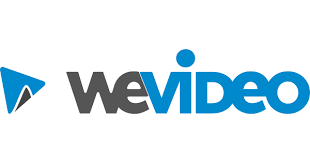
WeVideo is a video creation tool that allows students to create, edit, and share video content all in one place. It’s cloud-based and multiple people can collaborate on the same video from different locations. Video can be accessed from any computer or device. It includes intuitive editing and creation features such as themes, fonts, and green screen options.
The main benefits of WeVideo are its user-friendly interface that simplifies advanced video editing to enable both beginners and seasoned editors to create great videos. Users can also convert ideas into movies through multiple video editing modes. Students can mix and match over 600 formats of audio, video, and images with green screen, special effects, graphics, speed control, and more.
You can assign short WeVideo projects for students to create during class time or have them form small groups to collaborate on larger projects completed over a longer time. Since everything is stored in the cloud, students can work on it anytime. If students are new to video projects, start by challenging them to learn just a couple of features of WeVideo. Those with more experience can focus on making a more professional or involved product.
Ideas for using student video projects using WeVideo.
- Interview interesting people. Students could be in-person interviews where both parties sit next to each other or they could be virtual interviews, where someone far away records responses to questions. These interviews can act as learning aids, as well as help students connect with people in their future careers.
- Ask students to teach a concept via videos. Students can make a video where they are recording themselves completing a task on their computer screen or they can make a demonstration video like a coding class. Teachers and professors could then use these videos to help reinforce skills in your class or even flip some of your lessons.
- Self-assessment videos. Being able to assess oneself is an important skill that empowers students to become better learners.
- Video presentation for a written assignment. Instead of (or in addition to) a written assignment, ask students to create a short video on a written assignment and share their work with others.
- Video resume. A video resume helps highlight key skills as well as share the student’s personality and attitude with employers.
- Storytelling. Students can share their own stories and/or interview other people. Using a tool such as WeVideo with video editing features will enhance the story.
Depending on students’ video editing skills, WeVideo has two editing modes: Storyboard and Timeline. Storyboard is best for beginners, but students can switch between modes. Timeline allows students to add extra features like custom fonts and effects. They can upload images, video clips, and audio, and put them together with voice-over or text, or choose from the million licensed media options available within WeVideo. Additional features include green screen effects, screencasting, motion effects, exporting only audio to create a podcast, audio editing, and templates. Themes let students put a stylish filter over the entire video.The WeVideo site uses JumpStart technology, which allows users to begin editing right away without waiting for their files to upload.
- Built-in stock content (images, videos, B-rolls, and themes).
- Works on P.C. Mac, laptops, tablets, smartphones, and Chromebooks
- 720p video resolution
- Motion titles
- Screencasting
- Cloud storage
- Music library
- Slow motion
- Voiceover
- Advanced text editing
- File & media manager
- Multi-track editing and storyboard
2 Star –
WeVideo ranks 2/5 stars for accessibility. To learn more about the accessibility review, contact otl@du.edu.
- Does not support Text to Speech (TTS) such as NVDA, Jaws, or Voiceover
- Does not support Speech to Text (STT) such as Dragon NaturallySpeaking or Voice Dictation
- Cannot fully navigate without a mouse, though they do have a list of some keyboard shortcuts.
- Partially supports Screen Magnification and Color Contrast.
- Has a VPAT statement, contact support personnel for accessibility, and a product team that can enhance accessibility, and working with accessible360 to improve the accessibility of WeVideo for this year.
This technology is included with the University of Denver and there is no cost for DU students, faculty, and staff. Limited licenses are available. Contact otl@du.edu to request a license for your class.
Grundy, Stephen L. Editor. (2017, December 14). Creativity takes courage: Integrating video assignments into academic courses and blended programs in Engaging Students in Life-Changing Learning: Royal Roads University’s Learning and Teaching Model in Practice.
Romaniuk, S. N. (2021, May 12). Using video in higher education. eLearning Industry from https://elearningindustry.com/video-in-higher-education-using.

OTL Technology Rating
YELLOW technologies are not widely supported. DU may or may not have a 3rd party vendor security agreement for the use of these tools. However, some uses of this tool may be appropriate for teaching if certain conditions are met.
